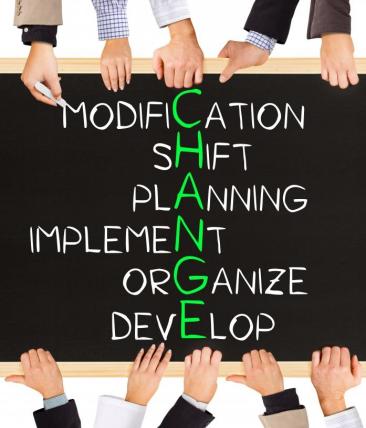
The business world is not immune to change. Companies grow, and they shrink in size. They expand their market reach, sometimes, and contract it at other times. They introduce new products and services and discontinue products and services. And, they change the ways in which they create, promote, price, and deliver their products and services.
Most frequently, as companies experience change, the jobs of its employees, and the ways in which employees must perform their jobs, also change. Many organizations believe that employees who are paid to do a job can simply be told to change. Perhaps the belief is that employees will see the need for the change as the company does, recognize the long-term value to the company (and ultimately to themselves), and readily accept the change.
But, it rarely works that way.
People will resist—even fight (overtly and covertly)—change they don’t understand or perceive to not be in their best interest. If the objective of the change is perceived to be driven by corporate greed, exploitation, or betrayal or the result is perceived to be harmful, they will not buy into it. This fact underscores the need to communicate to the people affected by and expected to carry out the change, the reasons for and the benefits of the change.
Also, people cannot change overnight…even if they want to. They can’t simply be told to change. People transition through change. Change must be phased in as existing routines and priorities are phased out. It will take time.
Managing organizational change requires thoughtful planning and responsive implementation which includes communication and consultation with, and the involvement of the people affected by the change. If you attempt to force change on people, problems are likely to arise.
Managers, it is on your shoulders the considerable responsibility for implementing change typically falls. To meet that challenge, you must be able to interpret, communicate, and enable.
To help your people transition through change, you must first identify starting and ending points—where you are today and where you want to be as a result of the change. Then, you will have to identify the why, what, and when elements of getting there.
You should understand the rationale for, objectives of, and benefits from the change. You will need this information to inform your people about the change and gain their acceptance. The more they understand about the change and its upside, the more likely they are to be building blocks of change rather than roadblocks to change.
Next, involve the people affected by the change and integral to carrying it out in a collaborative effort of developing a plan. The change will not take place without the cooperation and contribution of your people. You should also establish who will be responsible for what, by when, how it will be measured, and to whom the results will be reported. Each participant in the plan must know exactly what will be expected from him and how he will be judged in fulfilling his part of the plan.
Once you implement the plan, you will have to monitor progress and provide appropriate feedback to keep your people and the plan on track and on time. If activities have to be adjusted, that’s OK as long as you keep your focus on the final destination.
In the business environment, change is unavoidable. The manager who recognizes the dynamics of change can make the transition through change as painless as possible for the people affected. The more you inform your people about the need for and benefits of change and involve them in the development and implementation of the plan for change, the smoother the transition will be. The change will take place because of your people, not in spite of them.
To learn more, check out our latest book, Change the Sandler Way.

